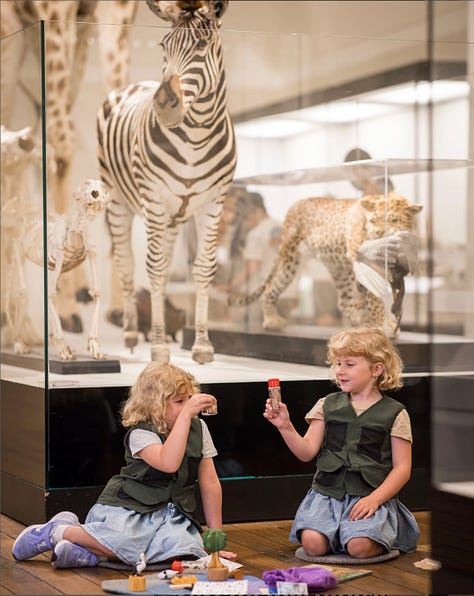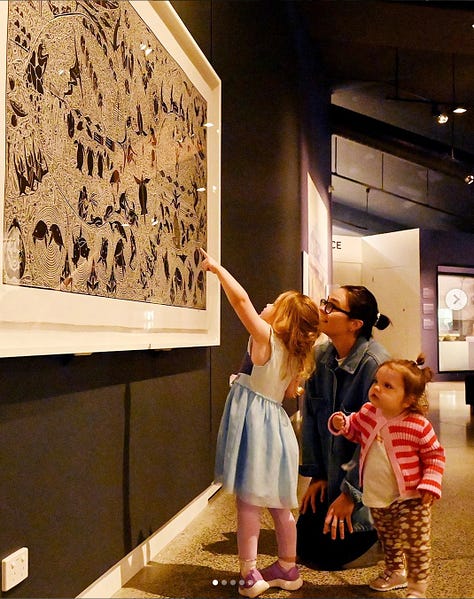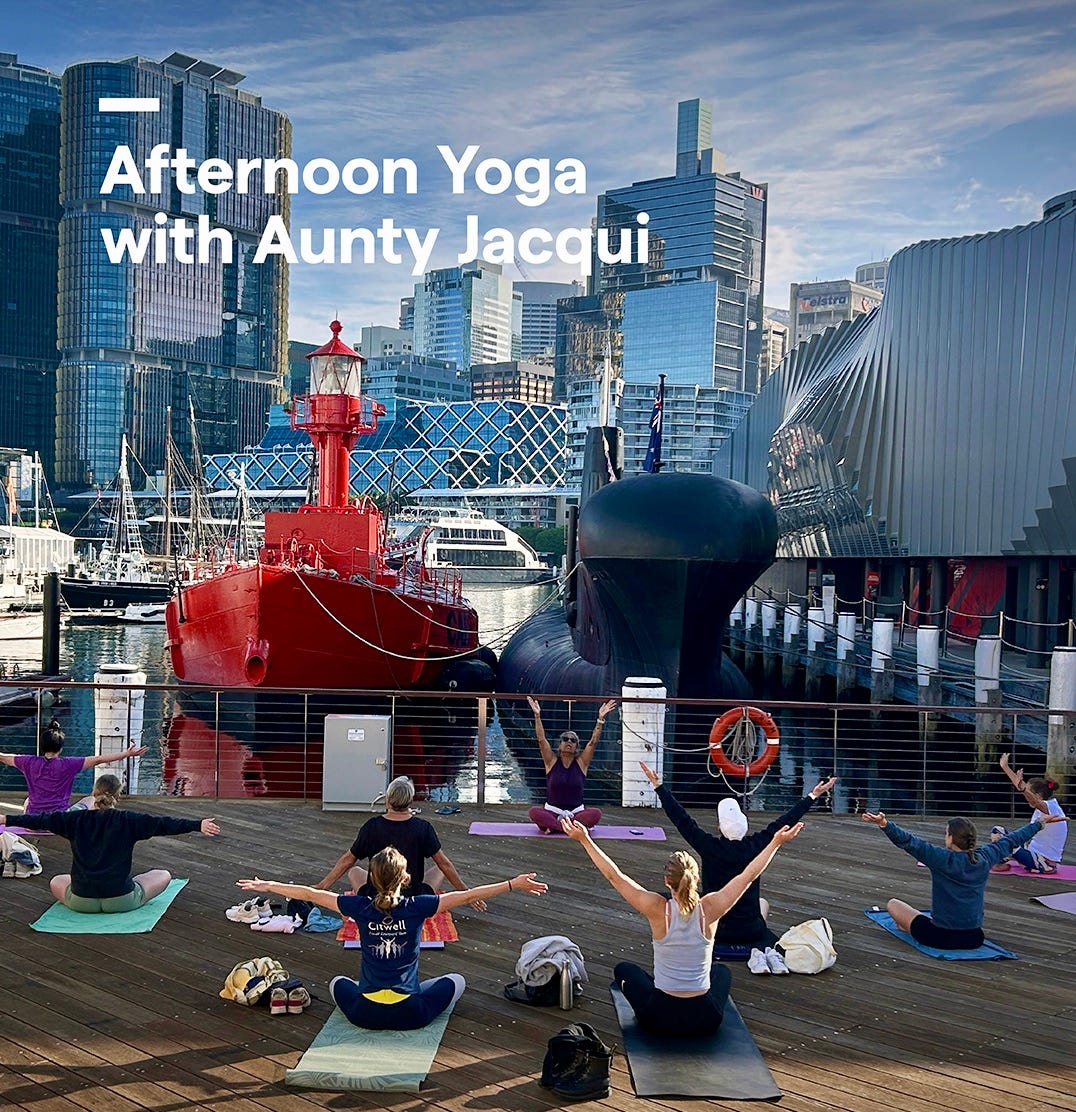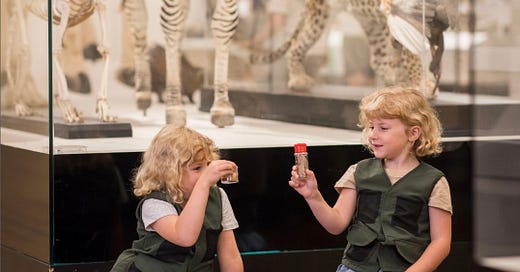DUDE, WHERE’S MY MUSEUM?
Future-fit or fighting for a future? Turn and face the strange changes.
When I worked as a curator at one of Australia’s national museums in the late 1980s, a question was posed at a monthly all-department roundtable, perhaps by the head of the Education section: Who is this museum for? One of the answers thrown onto the table, after the more obvious suggestions and an only half-joking “People escaping the rain”, was “Lonely people”. I admit I scoffed. But as I walk around yet another of the scores of museums visited since, I hear and feel the ongoing presence of that moment - not as a slowly receding echo but as a loudening siren.
It was emblematic, I thought at the time, and still do, of a shifting of focus from core functions – to collect, preserve, research and exhibit real objects – to much more nebulous activities predicated on a new conception of a museum’s raison d’etre: as entertainment not education.
It was a change happening in other cultural institutions too, spurred primarily by an increasingly wobbly commitment to culture at all levels of government, the buds of what bloomed into the onrushing culture wars.
The change was most starkly evident in the newly-transactional nature of funding arrangements, shifting sands on which funding was becoming conditional not on fulfilment of those core functions but on the hard metrics of visitor numbers. On top of this, museum leadership itself became sucked into a narrative that equated contemporary relevance with newness. Good luck with that one if your collection traverses millennia.
Back then the response to the change didn’t have a name but these days it’s called Engagement, and, in a sense, that prophetic tail has long outgrown the dog. Even if you never visit a museum, you can now “engage”, through staged social media posts populated with happily engaged visitors who preach the message that in a museum you’re never alone.



It became clear at that roundtable that we were now in a popularity contest in which museums were expected to compete with sport, cinema, tv, videos, circuses, and the emerging behemoth of internet based educational and entertainment options.
Worse, we were being forced by ministerial directive to compete on the enemy’s own well-defended turf – a fraught prospect any good general should always avoid – against better-financed multimillion indeed multibillion dollar rivals with decades of experience relieving the public of entertainment dollars in return for sugar hits of song-and-dance, sex-and-violence and steroidal hypertribalism.
It was, by design or accident, a zero-sum game, in which museums would almost certainly be the loser.
The idea that museums might not perform well in this cultural colosseum, battling on a shoestring budget for a share of a finite demographic, was lost in transition. But what if, instead, driven and sustained by a different but arguably more valid set of metrics, the museum sector had finessed its uniquely sophisticated strengths and presented itself in a much less crowded, less adversarial, but wider and richer cultural landscape in which those old verities still had some value?
We had adjustments to make and explaining to do, of course. Museums have never been passive or innocent bystanders to local, national and world events. Past collection policies, including accumulation of human remains for pseudoscientific eugenic studies, and display of looted artefacts, in a history of support for the imperial project and male-centric history-telling, being perhaps the most egregious reasons for some fairly robust mea culpas.
Not an easy adjustment for any institution with a long tradition of vitrines and more vitrines. But we did operate at a fulcrum of past and future, a space both ethereal and practical, potentially exciting enough intellectually and visually to carve our own niche in this brave new world of infotainment.
But fuck that for an idea.
We’ll never know what might have been. We were now in a scenario in which lonely people became grist for the visitation mill, processed through the abacus of profit and loss, numbers not nuance. “Shit through a goose” the acting director of my institution told me, without a scintilla of irony or embarrassment.
Alongside the cohort of lonely people would soon be yoga classes, silent discos, book clubs, wedding receptions, and most ubiquitous of all, school kids on rigidly curriculum-tied tours, not pondering revelatory objects in mind expanding wonder, perhaps even questioning the status quo (shock horror), but clasping clipboards of tickable boxes.
By all means, let’s get more visitors through museum doors. But that lonely people moment smacked of desperation, and it still does. It presaged an era of compromise if not outright capitulation.
All object labels were now mandated to be written at a level of simplicity six-year-olds can understand. And increasingly, objects became secondary to expensive “interactives” meant to “interpret” them. Ill-judged, sometimes malicious but always relentless cuts to government funding - “productivity dividends” in the Orwellian language of the culture wars - demanded ever greater fundraising efforts and, perforce, a focus on blockbusters that blur the line between knowledge and entertainment, fact and fashion, narrative and fiction.
The result? Near-total obliteration from the public’s mind of those un-sexy museum engine room staples: research, theory, publication and contemplation.
Museums were now become a mere subset of the so-called creative industries: no place on their balance sheets for a column marked Public Good.
Resilience undermined, museums have become sitting ducks, caught in crossfire from right and left that frames them simultaneously, and ironically, though perhaps not entirely unfairly, as both elite woke-ists and oppressively patriarchal.
Nowhere is this bind seen more clearly than in the trend for “interventions” by contemporary artists – a shorthand attempt to enliven display areas and capture a zeitgeist for inclusion, a sort of art-washing of collections historically skewed towards men and power elites, by the addition of contemporary art that critiques the very collection that has invited their inclusion, incidentally absolving the institution of some of the need to self-flagellate and rebalance.
Other signs of the new museum landscape are equally easy to spot. Cavernous entrance spaces, designed for fundraising events when not filled with herds of tourists funneled towards a handful of key artefacts before being whisked back to waiting buses. Off-the-shelf so-called blockbuster exhibitions that have little or nothing to do with a museum’s core collection or rationale. Immensely expensive trophy acquisitions while myriad significant holes in the collection remain unfilled. Portraits of major donors for whom their name on a gilded function room or even an entire wing is plainly not enough for their egos. Directors hired for their fundraising ability not their vision for the institution. Boards stacked with financiers and industrialists whose macho expansionist mindset (new! bigger! more!) further diminishes the profile of crucial backroom activities. And of course, the ubiquitous ever-expanding gift shop full of themed trinkets.
To the present precarious situation in the USA, and Australia and elsewhere too. Will museums resist the challenge of an unprecedented right-wing onslaught? Counter it by helping forge social resilience and cohesion through knowledge and truth sharing, and unify resistance through cultural strengthening? Is there enough muscle memory and the skillset to do so even if the will is there? Or are they, as many universities and other cultural institutions also are, barely fit for purpose, too eviscerated, caught in the open in a no-man’s land of ambiguous, tawdry moral vacillation between past prestige and hopeful populism? These are the unfolding questions, answers to which are by no means certain.



